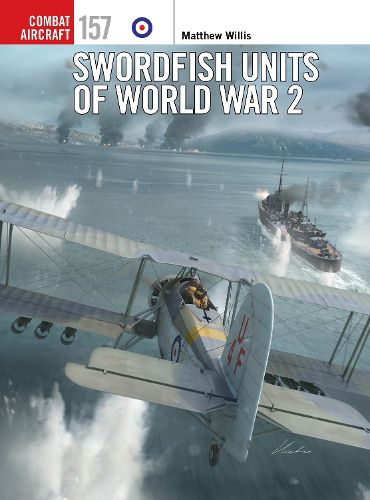Readings Newsletter
Become a Readings Member to make your shopping experience even easier.
Sign in or sign up for free!
You’re not far away from qualifying for FREE standard shipping within Australia
You’ve qualified for FREE standard shipping within Australia
The cart is loading…






A fully illustrated account of the World War 2 combat career of the Fairey Swordfish torpedo-bomber, one of the Royal Navy's most resilient and effective aircraft of the period.
During the 1930s, the Royal Navy's Fleet Air Arm sought an aircraft to combine the functions of torpedo attack, reconnaissance and gunnery spotting, eventually realising this goal with the Swordfish biplane. Despite competition from more modern types like the Blackburn Shark and Barracuda, the Swordfish made a key contribution to some of Britain's greatest naval successes of World War 2, helping to tip the balance during operations such as the raid on the Italian battle fleet at Taranto in November 1940, and the attacks on the German battleship Bismarck in May 1941. Elsewhere, it assumed an anti-submarine role both in the Battle of the Atlantic and when escorting Arctic convoys, and was used by the RAF for anti-shipping work during the D-Day landings and the final stages of the European war.
With this fascinating study, historian Matthew Willis draws on Admiralty files, operational records and interviews with Fleet Air Arm aircrew to assemble a wide-ranging history of one of the Royal Navy's most important aircraft. Archival photographs and 22 newly commissioned colour profiles help to chart the development of the Swordfish, detailing the aircraft's resilience and adaptability through both its many victories and its equally eventful defeats.
$9.00 standard shipping within Australia
FREE standard shipping within Australia for orders over $100.00
Express & International shipping calculated at checkout
A fully illustrated account of the World War 2 combat career of the Fairey Swordfish torpedo-bomber, one of the Royal Navy's most resilient and effective aircraft of the period.
During the 1930s, the Royal Navy's Fleet Air Arm sought an aircraft to combine the functions of torpedo attack, reconnaissance and gunnery spotting, eventually realising this goal with the Swordfish biplane. Despite competition from more modern types like the Blackburn Shark and Barracuda, the Swordfish made a key contribution to some of Britain's greatest naval successes of World War 2, helping to tip the balance during operations such as the raid on the Italian battle fleet at Taranto in November 1940, and the attacks on the German battleship Bismarck in May 1941. Elsewhere, it assumed an anti-submarine role both in the Battle of the Atlantic and when escorting Arctic convoys, and was used by the RAF for anti-shipping work during the D-Day landings and the final stages of the European war.
With this fascinating study, historian Matthew Willis draws on Admiralty files, operational records and interviews with Fleet Air Arm aircrew to assemble a wide-ranging history of one of the Royal Navy's most important aircraft. Archival photographs and 22 newly commissioned colour profiles help to chart the development of the Swordfish, detailing the aircraft's resilience and adaptability through both its many victories and its equally eventful defeats.